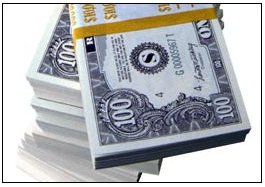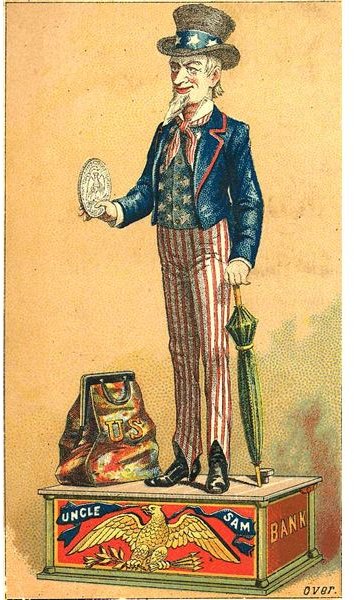Beginners Guide to Retirement Planning Fundamentals
The early stages of one’s income earning career are probably the best time to be thinking about planning for retirement. An individual has quite a bit of time to start considering their options and setting aside enough money to begin building a retirement savings nest egg. Most people at this time probably don’t have a clue about retirement planning and should probably be made aware of retirement fundamentals.
The first thing to be determining when considering building a retirement nest egg is how much discretionary income you have and how much of it you want to be save for retirement. The way to go about this is to add up all of your income sources after taxes and subtract all of your normal recurring living expenses and possibly a small margin for unexpected items. The difference would be your discretionary income, that is, income to be spent or invested at your discretion.
Once you’ve arrived at your discretionary income you’ll want to know what choices there are for investing it. If your’e an employee or self-employed you’re probably already slightly ahead in the game because a small part of your paycheck is automatically contributed to social security benefits.
Early on
Emergency Savings Plan
Knowing how much money that your have to work with leads into another one of the basic retirement planning fundamentals; this is establishing an emergency savings plan. It could be in the form of a savings account with a bank or a savings and loan company. These accounts can be considered safe because they are insured against loss by the Federal Deposit Insurance Corp. for amounts up to $250,000 for an individual. This coverage amount was raised from $200,000 to $250,000 by the US Congress on October 3, 2008 and will stay in effect until 2013.
If the amounts of your contributions to the account are small, the accumulation can be helped along by investing in a 30 day certificate of deposit (CD). When the CD matures you’ll have more interest than you would have earned in the savings account and your money hasn’t been tied up for a very long time (there are penalties for early withdrawals). This can also be rolled over into another 1 month CD, or maybe a 2 or 3 month CD. When you have enough money in the account a six month CD can be considered. About three months of living expenses are usually accumulated in an emergency savings account, but six months isn’t unusual.
IRAs
Establishing an Individual Retirement Arrangement (IRA) could also be a good choice for young or middle-aged investors. They can be opened with a bank, a mutual fund, an insurance company, or a stockbroker. There are contribution limits and early withdrawals can be painful (usually 10% tax on the amount of the withdrawal). There are different types of IRAs. Individuals generally have traditional IRAs or Roth IRAs available to them. Both have tax advantages depending what suits you. The traditional IRA defers the income tax on contributions until the year that they are received. Roth IRA contributions are taken from income that has already been taxed so the distributions aren’t taxed in the year that they are received.
Midlife
By the time a person is in their 30’s or 40’s they should be more solidly established in a retirement investment strategy. First, and foremost, the emergency savings plan should be unquestionably in place. The retirement accounts should be comprised of more than one investment vehicles that are comfortable for you. You should have a monthly budget in place that is a routine for you. with debt under control in anticipation of a debt-free retirement. How much money you will need for retirement should be calculated and compared to the returns that your existing savings would be expected to earn at that time. Any gaps should be addressed with some way to close them. Having a written budget in front of you can be very convenient for this.
Other investments that typical for an individual can be invested in at this time in their working career are:
401(k) plan - A government sponsored investment account offered by employers. These are voluntary investment accounts that let employees make tax-deferred contributions from their wages or salaries. Contribution limits and the type of securities or funds that can be chosen for investing varies from company to company. Some employers provide matching funds to an employee’s contributions. Details about these plans should be provided by the employer.

IRAs - Were previously mentioned, but there are different IRAs offered by employers, such as the usual traditional and Roth IRAs, the Simplified Employee Pension (SEP), SIMPLE IRAs offered by small businesses, and spin-offs of the traditional IRA offered by some financial institutions.
Company pension plans - two kinds of employer-sponsored plans that are offered by some employers are the defined-benefit pension plan and the defined-contribution plan. A defined-benefit plan means that the benefit payments during retirement are guaranteed according to a contract and won’t change no matter what to the value of the plan’s investments. A defined-contribution plan is one where the contributions are set according to the agreement but the benefit payments can vary with the performance of the plan’s investments.
Annuities - Are offered by insurance companies in various types with many options. These are basically contracts where the annuitant agrees to pay the company a certain amount of cash in the form of a lump-sum, or periodic payments over specified amount of time in return for an income over a specified number of years. The two basic types of annuities are fixed annuities and variable annuities.
Pre-retirement years
This is a time in one’s working career that is about five to ten years before retirement and all of the retirement planning fundamentals should be working for him or her. Most people are looking ahead to beginning a new lifestyle and they should check every aspect of their retirement strategy to be sure that it will provide for them as planned. Investments should be checked to be sure that they are

suitable for retirement and can be expected to provide the desired income. A good balance between stocks and bonds should be achieved, which agrees with your own comfort level with risk. One should keep in mind that lower risk investments like CDs or bonds have lower returns and that the higher returns are with the higher risk investments like equities.
Your current cash position should be scrutinized. How are you prepared for the here and now? Your emergency savings plan, as described previously, should be in place as it always should have been. Debts should be under control in a way that you will be debt free or close upon retirement.
If there is a gap between the amount of money in your current investments and retirement plans, measures should be taken to close it. This would include larger contributions to 401(k)s, and IRAs, or buying some extra stocks or bonds for an investment portfolio. Planning to take a part time job after retirement could also be a good source of income and causes less demand to be placed on your retirement savings.
Summary
Retirement can be quite a change from the working lifestyle of the previous years. It can be really important to make careful plans early on in your working career to insure a comfortable retirement. Your current cash situation should be provided for with emergency savings, savings accounts, and certificates of deposit, and then contributions to retirement savings accounts and other investments should be determined. These should be adjusted throughout a working career as one gets closer to those golden years.
References
-
Bankrate.com, Work sheet: Retirement planning checklist, http://www.bankrate.com/finance/financial-literacy/planning-to-retire.aspx
Bruce, Laura, “Building an emergency fund”, http://www.bankrate.com/finance/personal-finance/building-an-emergency-fund-1.aspx
Bell, Claes, “FDIC Insurance protects your money (except when…)” _Bankrate.com,_September, 2008.
Retirement shortfall calculator, http://www.bankrate.com/calculators/retirement/calculate-retirement-income-money.aspx
MSN Money staff, “Your 5-minute guide to retirement security” MSN Money.com, June 2009.
Kaiser, Barry, “Retirement Planning: Where Will My Money Come From?” Investopedia, 2011.
Images:
Uncle Sam mechanical bank / Wikimedia / public domain / The Courier Lith. Co. Buffalo
Stack of Money / Wikimedia / Wikimedia / Federal Bureau of Investigation
Hotel Solmar is in the foreground, with parts of the TerraSol and Playa Grande resorts visible behind it./ Wikimedia / Provelt
